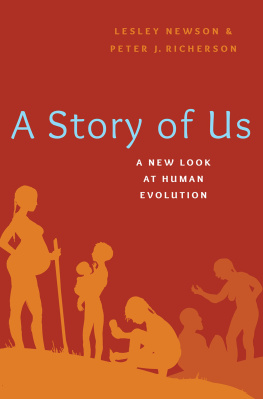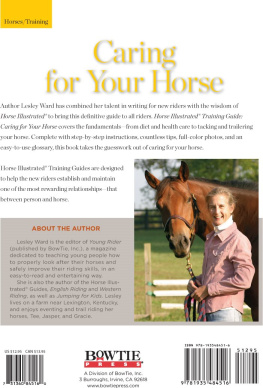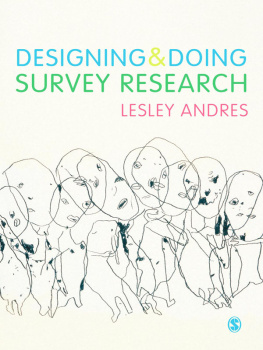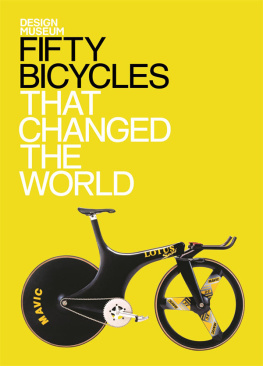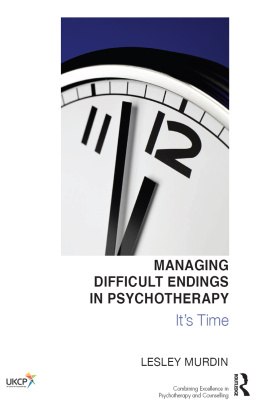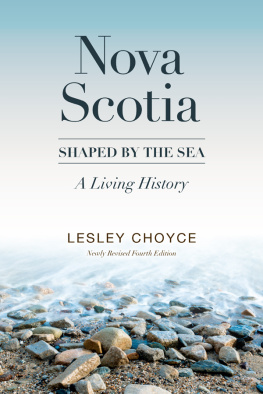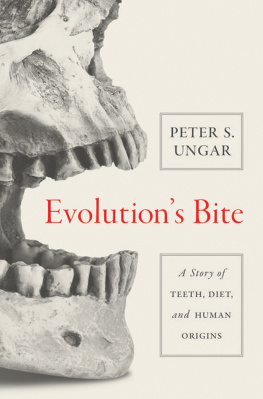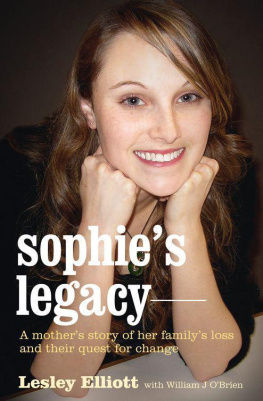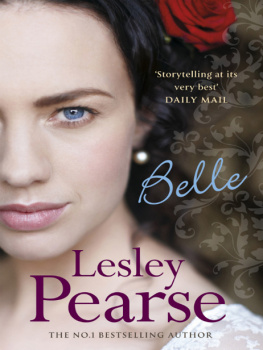Lesley Newson - A Story of Us: A New Look at Human Evolution
Here you can read online Lesley Newson - A Story of Us: A New Look at Human Evolution full text of the book (entire story) in english for free. Download pdf and epub, get meaning, cover and reviews about this ebook. year: 2021, publisher: OUP Premium, genre: Romance novel. Description of the work, (preface) as well as reviews are available. Best literature library LitArk.com created for fans of good reading and offers a wide selection of genres:
Romance novel
Science fiction
Adventure
Detective
Science
History
Home and family
Prose
Art
Politics
Computer
Non-fiction
Religion
Business
Children
Humor
Choose a favorite category and find really read worthwhile books. Enjoy immersion in the world of imagination, feel the emotions of the characters or learn something new for yourself, make an fascinating discovery.
- Book:A Story of Us: A New Look at Human Evolution
- Author:
- Publisher:OUP Premium
- Genre:
- Year:2021
- Rating:5 / 5
- Favourites:Add to favourites
- Your mark:
- 100
- 1
- 2
- 3
- 4
- 5
A Story of Us: A New Look at Human Evolution: summary, description and annotation
We offer to read an annotation, description, summary or preface (depends on what the author of the book "A Story of Us: A New Look at Human Evolution" wrote himself). If you haven't found the necessary information about the book — write in the comments, we will try to find it.
A Story of Us: A New Look at Human Evolution — read online for free the complete book (whole text) full work
Below is the text of the book, divided by pages. System saving the place of the last page read, allows you to conveniently read the book "A Story of Us: A New Look at Human Evolution" online for free, without having to search again every time where you left off. Put a bookmark, and you can go to the page where you finished reading at any time.
Font size:
Interval:
Bookmark:


Oxford University Press is a department of the University of Oxford. It furthers the Universitys objective of excellence in research, scholarship, and education by publishing worldwide. Oxford is a registered trade mark of Oxford University Press in the UK and certain other countries.
Published in the United States of America by Oxford University Press
198 Madison Avenue, New York, NY 10016, United States of America.
Lesley Newson and Peter J. Richerson 2021
All rights reserved. No part of this publication may be reproduced, stored in a retrieval system, or transmitted, in any form or by any means, without the prior permission in writing of Oxford University Press, or as expressly permitted by law, by license, or under terms agreed with the appropriate reproduction rights organization. Inquiries concerning reproduction outside the scope of the above should be sent to the Rights Department, Oxford University Press, at the address above.
You must not circulate this work in any other form and you must impose this same condition on any acquirer.
Library of Congress Cataloging-in-Publication Data
Names: Newson, Lesley, author. | Richerson, Peter J., author.
Title: A story of us : a new look at human evolution /
by Lesley Newson & Peter J. Richerson.
Description: New York, NY : Oxford University Press, [2021] |
Includes bibliographical references and index.
Identifiers: LCCN 2020032769 (print) | LCCN 2020032770 (ebook) |
ISBN 9780190883201 (hardback) | ISBN 9780190883225 (epub)
Subjects: LCSH: Human evolution.
Classification: LCC GN281.4 N49 2021 (print) |
LCC GN281.4 (ebook) |DDC 599.93/8dc23
LC record available at https://lccn.loc.gov/2020032769
LC ebook record available at https://lccn.loc.gov/2020032770
DOI: 10.1093/ oso/ 9780190883201.001.00011 3 5 7 9 8 6 4 2
To our descendants: Scott, Kate, Emily, Sophie, Alex, Peter, Jonah, and those who havent been born yet.
The ideas and information we drew upon to write this book have been thought of, discovered, and shaped by thousands of people. A good portion of those people are mentioned in the notes so that readers can find out more about their work.
But we owe a special debt to the many friends and colleagues who helped shape our ideas of human evolution. First and foremost is Petes long-time co-conspirator and friend Rob Boyd. The others we want to especially thank are Billy Baum, Bob Bettinger, Don Campbell, Tim Caro, Dwight Collins, Bill Davis, Jerry Edelman, Russ Genet, Alex Haslam, Joe Henrich, Katie Hinde, Sarah Hrdy, Kevin Laland, Stephen Lea, Bill Mason, Richard McElreath, Monique Borgerhoff Mulder, Robert Murphey, Tom Postmes, Joan Silk, John Odling-Smee, Mark Thomas, Colin Tudge, Paul Webley, Bruce Winterhalder, and Andy Whiten. And then there are the graduate students who taught us so much. These include Bret Beheim, Adrian Bell, Lien-Siang Chou, Viken Hillis, Nicole Naar, Brian Paciotti, Lore Ruttan, Bryan Vila, Tim Waring, and Matt Zefferman. And thank you to the Department of Environmental Science and Policy at University of California, Davis, which has been such a congenial home.
There were also people who provided ideas and advice on the actual writing of the book, listening to us, giving us feedback and reading chapters (including some appalling early drafts): Marion Blute, Barry Bogin, Joseph Carroll, Marilu Carter, Howard Cornell, Andreas De Block, Michael Fitzgerald, James Gaasch, Mark Grote, Susan Harrison, Sue Hodgson, Beth Jaffe, Graham Jelfs, Don Lotter, Mary Brooke McElreath, Cristina Moya, Peter Pascoe, Susan Pitcher, Dorothy Place, Sarit Richerson, Peter Thompson, Roman Wittig, Sydney Wood, Vedder Wright, and Devon Zagory.
Five people put a great deal of work into helping us, reading each of the chapters, suggesting improvements and keeping us company. They are Jeff Alexander, Sarah Brearly, Kristin Rauch, Nancy Redpath, and Debbie Worland.
We are very grateful to our illustrator, Jan Nerding, who also made many useful comments on the manuscript, and to Maurice Simmons who imagined two of our early ancestors.
And finally, thanks so much to Luba Ostashevsky, our agent, friend, muse, and the midwife of this book.
What is it to be human? With your first breath, you began your lifelong exploration of this question. You slowly tried to work out how to be comfortable in your body and the world around you. You needed others to care for you, and you automatically behaved in ways that encouraged them to care. Your eyes were attracted to their faces and you stared back into their eyes. Your lips stretched themselves into little smiles. You cried when you felt uncomfortable. Your life has been intertwined with the lives of other people from the moment you were conceived.
Scientists want to understand how our species evolved because they believe it will shed light on the question of what it is to be human. Speculation about human evolution has been going on for over 150 years, but it wasnt until the middle of the 20th century that stories of human evolution began to be told to the general public. The scientists telling these stories had very little evidence to go onjust a few fragments of human-like bones and teeth that archaeologists had found. But they thought they understood enough about people to put together a good story. They confidently described apemen fighting over women and territory on the African savanna. It was a story that made sense to people who had recently experienced a devastating war and felt a little uncomfortable talking about sex in polite company. Talking about our animal ancestors sex lives was acceptable but still a little titillating.
The world has moved on since these days, but the apemen stories didnt change much. By the 1990s, scientists were less interested in how the apemen fought and more interested in how they thought. The stories told by these evolutionary psychologists were still about apemen in the savanna, but these apemen were processing information and calculating how to defend territory and get the most females.
In recent years, scientists have released a torrent of new information about what our ancestors were like and how they lived their lives.needed. In a matter of days, people found their lives dramatically changed as population after population attempted to slow the spread of a new virus. Many people were compelled to stay at home to reduce their risk of catching the virus, while others were asked to risk infection and go to work, caring for the sick and supporting those sheltering at home. Scientists with relevant expertise worked at trying to better understand the virus and its spread, and to find ways of treating and/or preventing infections. There was talk of national emergencies and being at war, but this was a different kind of war. It wasnt a war of one group of humans against another group. Instead, all humans were urged to unite to confront a common enemythe virus.
Efforts to fight this invisible enemy were often shambolic, and any unity achieved was far from perfect. But the global response to this virus in 2020 was very different from what would have happened if a virus like this had emerged in the middle of the 20th century. Most 21st-century people expected (and hoped) that humans would work together, not only to defeat the virus, but also to protect the complex social and economic bonds of our shared world.
Our story of human evolution explains how the descendants of apes living in an African forest could have evolved into the kind of animal that behaves like this (see
Font size:
Interval:
Bookmark:
Similar books «A Story of Us: A New Look at Human Evolution»
Look at similar books to A Story of Us: A New Look at Human Evolution. We have selected literature similar in name and meaning in the hope of providing readers with more options to find new, interesting, not yet read works.
Discussion, reviews of the book A Story of Us: A New Look at Human Evolution and just readers' own opinions. Leave your comments, write what you think about the work, its meaning or the main characters. Specify what exactly you liked and what you didn't like, and why you think so.

